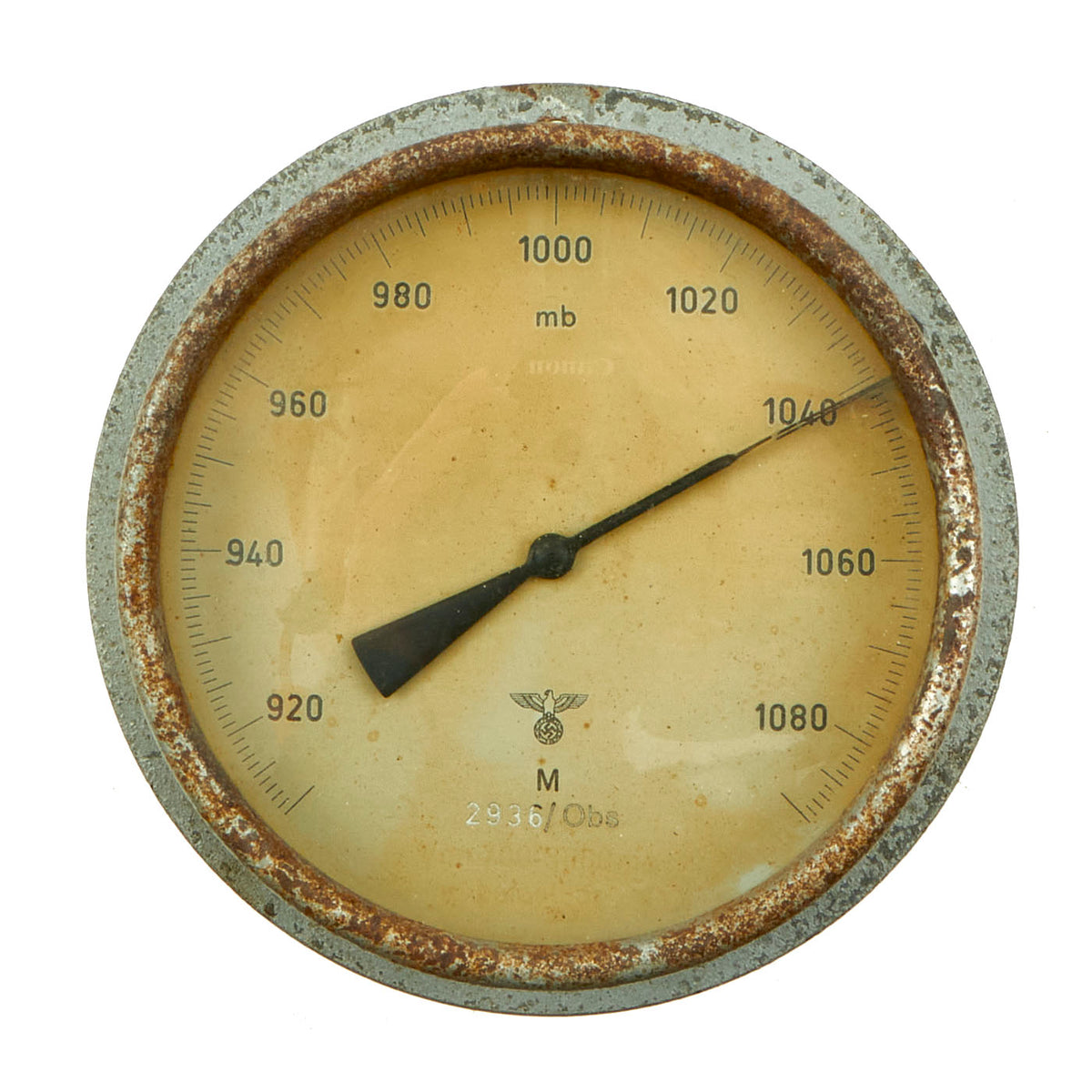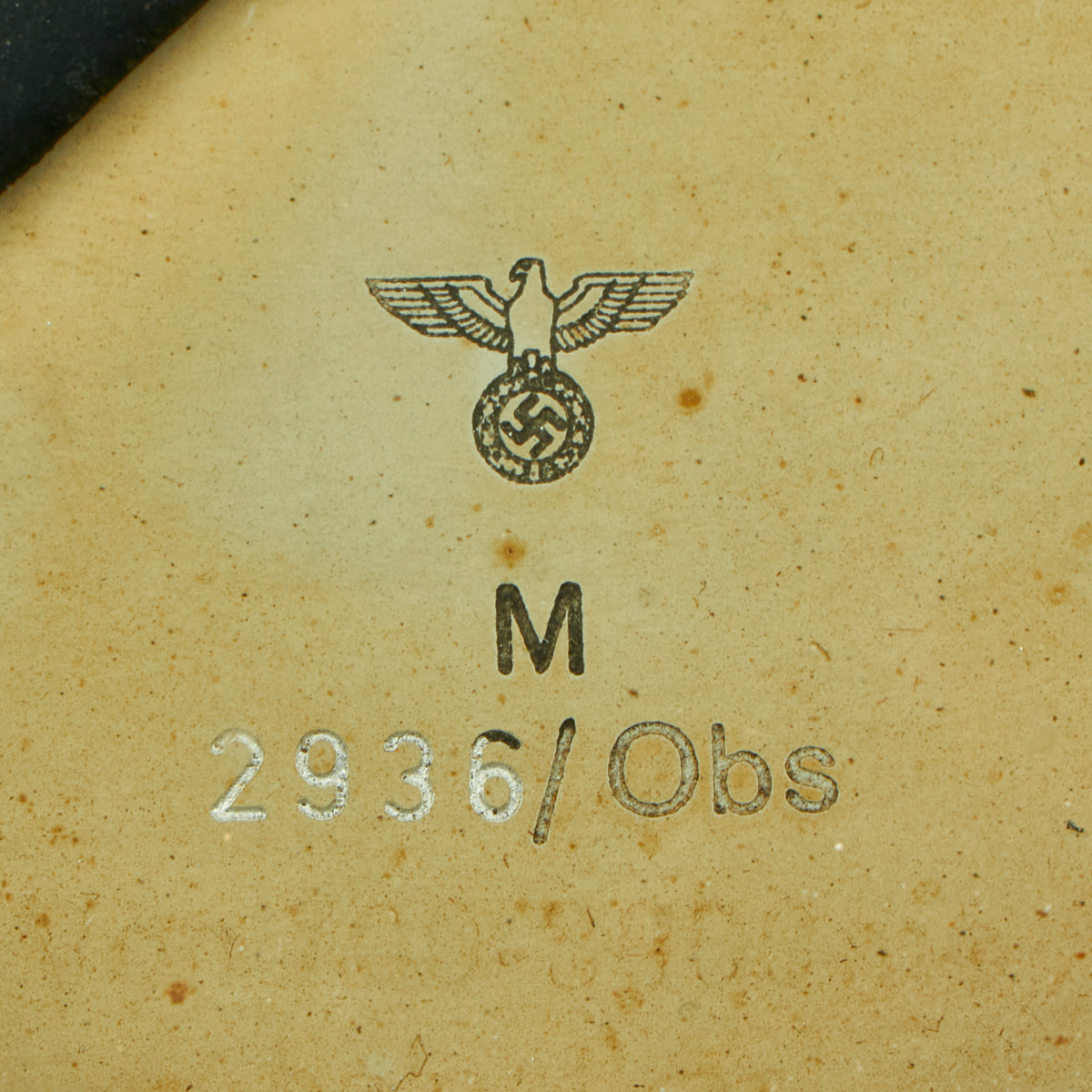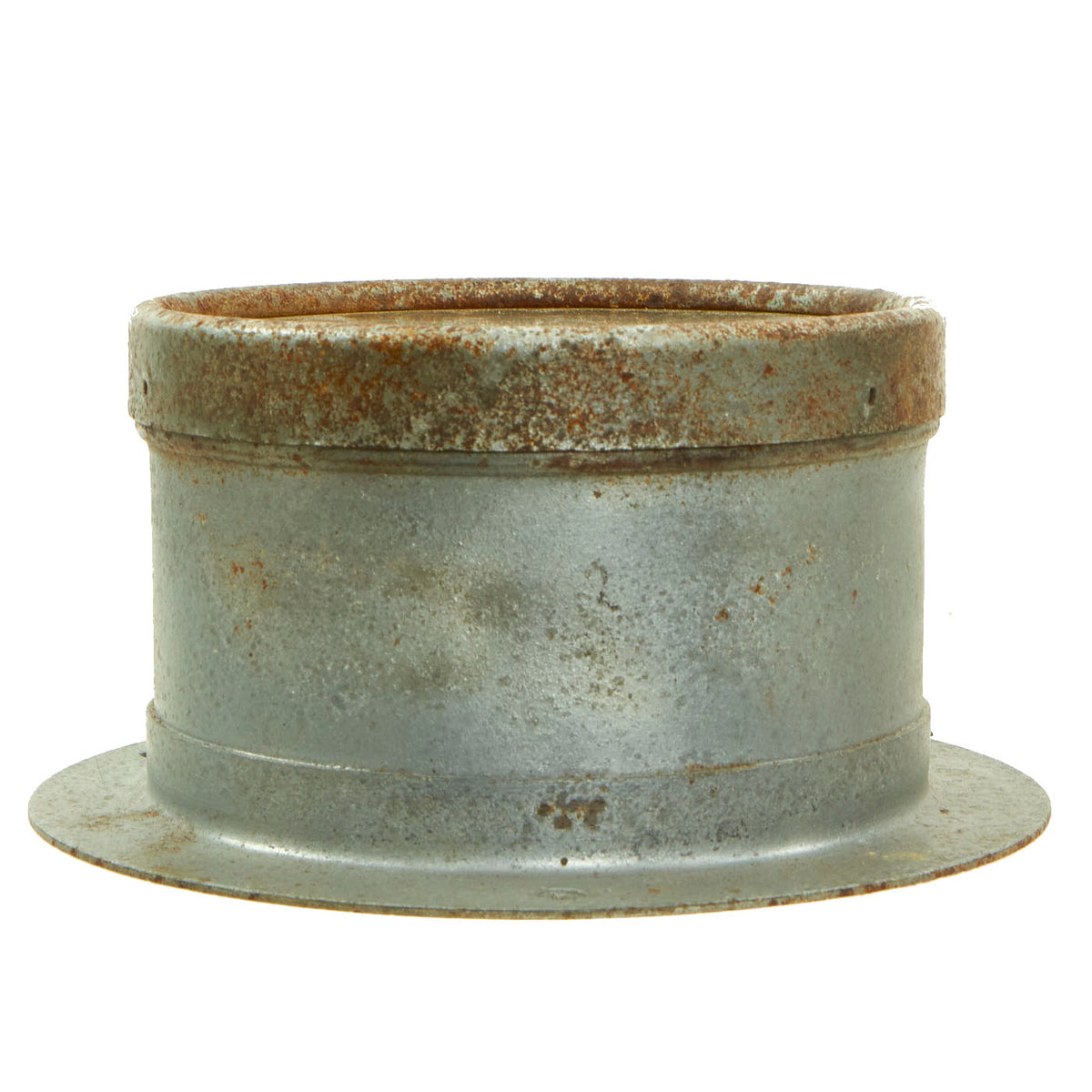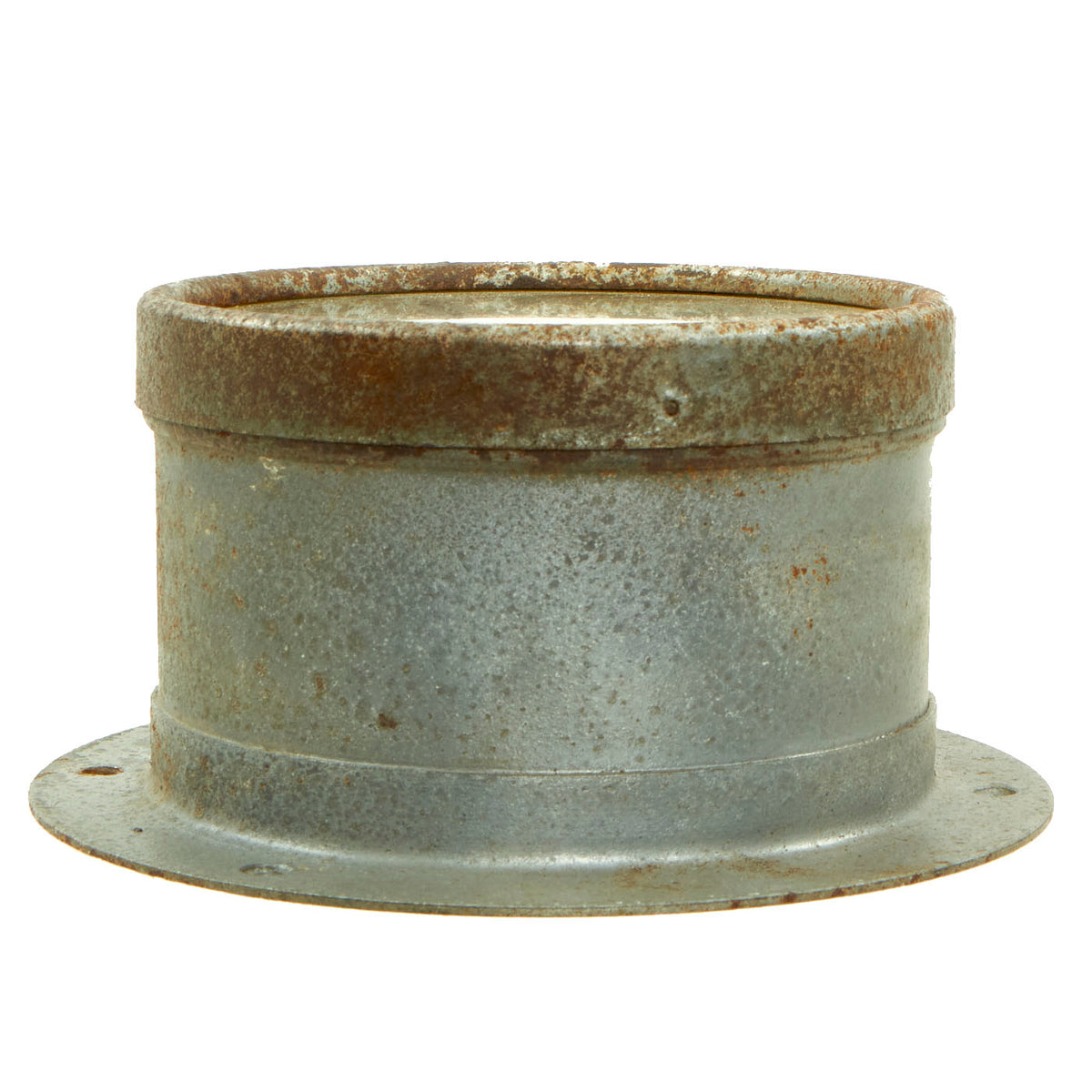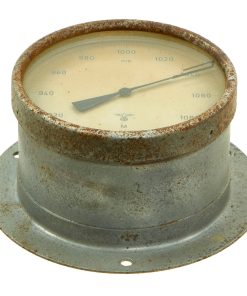Original German WWII Kriegsmarine U-Boat Aneroid Barometer Original Items
$ 895,00 $ 223,75
Original Item: Only One Available. A barometer is a scientific instrument that is used to measure air pressure in a certain environment. Pressure tendency can forecast short term changes in the weather. Many measurements of air pressure are used within surface weather analysis to help find surface troughs, pressure systems and frontal boundaries.
An aneroid barometer is an instrument used for measuring air pressure as a method that does not involve liquid. Invented in 1844 by French scientist Lucien Vidi, the aneroid barometer uses a small, flexible metal box called an aneroid cell (capsule), which is made from an alloy of beryllium and copper. The evacuated capsule (or usually several capsules, stacked to add up their movements) is prevented from collapsing by a strong spring. Small changes in external air pressure cause the cell to expand or contract. This expansion and contraction drives mechanical levers such that the tiny movements of the capsule are amplified and displayed on the face of the aneroid barometer. Many models include a manually set needle which is used to mark the current measurement so a change can be seen. This type of barometer is common in homes and in boats. It is also used in meteorology, mostly in barographs and as a pressure instrument in radiosondes.
Of all the navigational instruments found onboard a small boat, one of the most important is undoubtedly the barometer. The barometer is the instrument used to show changes in atmospheric pressure, and by observing these changes sailors can know what kind of weather system they will encounter.
Barometers were also vital to U-Boat operations. Poor weather conditions would affect the sea current and in turn would have the possibility of causing damage to the U-Boat or causing it to stray off course as well as making shots against the enemy inaccurate. When the surface was clear, U-boats would emerge and a barometric pressure would be read to help assist in navigating through storms or just avoiding them altogether.
This Kriegsmarine marked barometer is measured in Millibars and is marked as such by mb just below the 1000 mark on the face of the barometer. A millibar is 1/1000th of a bar and is the amount of force it takes to move an object weighing a gram, one centimeter, in one second. c. Millibar values used in meteorology range from about 100 to 1050. At sea level, standard air pressure in millibars is 1013.2.
There are maker marks present, but unfortunately they are far too faded to be read properly. The markings on the face that are visible consists of the unit of measurement mb the Kriegsmarine Eagle with M / 2936 / Obs underneath. The pressure scale reads from 920 Millibars to 1080 Millibars.
The magnetic housing still retains much of the silver paint, but has the possibility of having been repainted at least once. The face has age toning present and is now a lovely light yellow instead of the original white. The face measures 5” across with the base measuring at 6 ¼”.
This is a lovely example of a vital piece of equipment used by the German Kriegsmarine during WWII. Comes more than ready for display.
Fast Shipping with Professional Packaging
Thanks to our longstanding association with UPS FedEx DHL, and other major international carriers, we are able to provide a range of shipping options. Our warehouse staff is expertly trained and will wrap your products according to our exact and precise specifications. Prior to shipping, your goods will be thoroughly examined and securely secured. We ship to thousands clients each day across multiple countries. This shows how we're dedicated to be the largest retailer on the internet. Warehouses and distribution centres can be located throughout Europe as well as the USA.
Note: Orders with more than one item will be assigned a processing date depending on the item.
Before shipping before shipping, we'll conduct a thorough inspection of the items you have ordered. Today, the majority of orders will be delivered within 48 hours. The delivery time will be between 3-7 days.
Returns
The stock is dynamic and we cannot completely manage it because multiple stakeholders are involved, including our factory and warehouse. So the actual stock may alter at any time. It's possible that you may not receive your order once the order has been made.
Our policy is valid for a period of 30 days. If you don't receive the product within 30 days, we are not able to issue a refund or an exchange.
You can only return an item if it is unused and in the same state as the day you received it. You must have the item in its original packaging.
Related products
Uncategorized
Uncategorized
Uncategorized
Uncategorized
Uncategorized
Uncategorized
Uncategorized
Armored Burgonet Helmet & Polearm from Scottish Castle Leith Hall Circa 1700 Original Items
Uncategorized
Uncategorized
Uncategorized
Uncategorized
Australian WWII Owen MK1 Machine Carbine SMG Custom Fabricated Replica with Sling Original Items
Uncategorized
Uncategorized
Armoured Fighting Vehicles of the World: AFVs of World War One (Hardcover Book) New Made Items
Uncategorized

